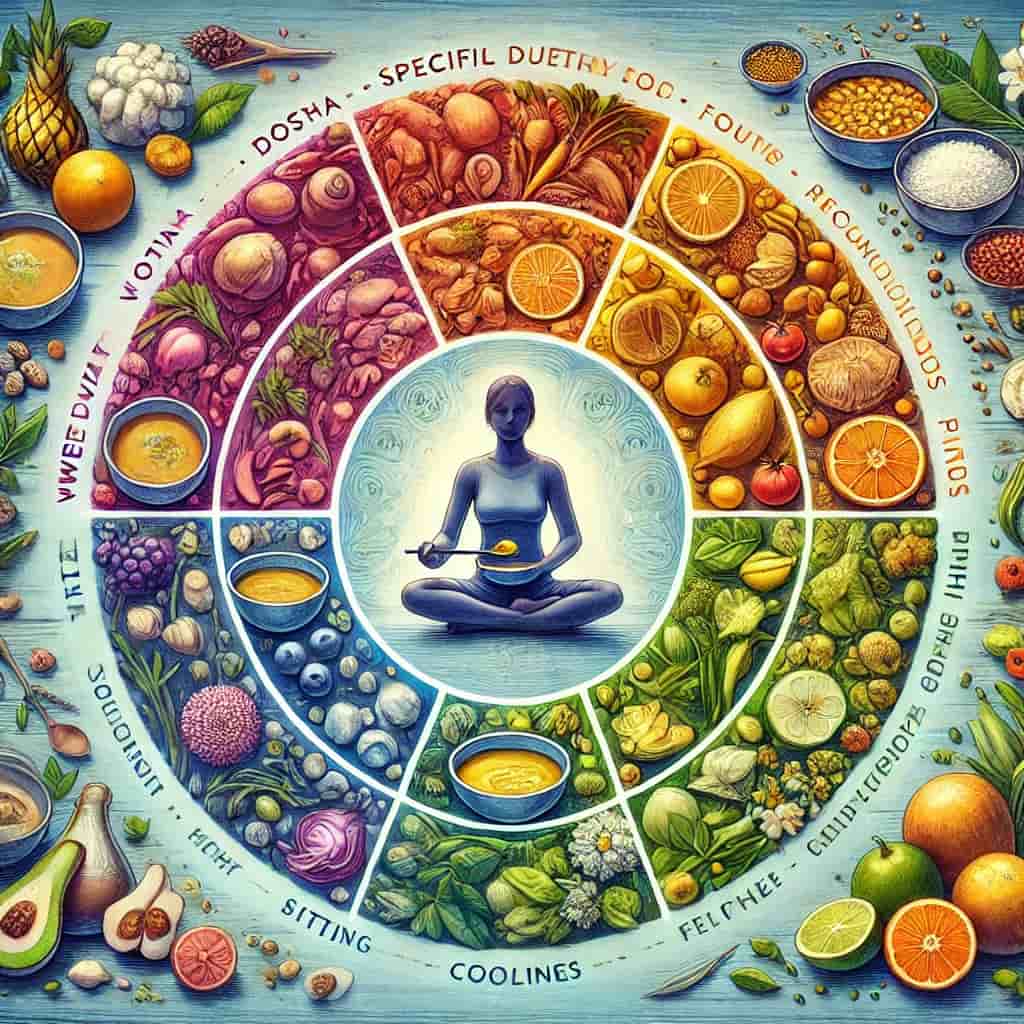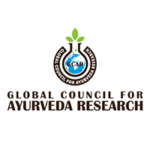What is Ayurveda? Treatments, Diet, Herbs, Massage, Lifestyle
What is Ayurveda ?
Ayurveda, often referred to as the “science of life,” is one of the world’s oldest holistic healing systems. Originating in India over 3,000 years ago, Ayurveda is not just a system of medicine, but a way of life that aims to promote good health and longevity.
The term “Ayurveda” is derived from two Sanskrit words: “ayur” meaning life, and “veda” meaning science or knowledge. At its core, Ayurveda is based on the belief that health and wellness depend on a delicate balance between the mind, body, and spirit. Unlike Western medicine, which often focuses on treating specific symptoms or diseases, Ayurveda takes a preventative approach, emphasizing the maintenance of balance in all aspects of life to prevent illness and promote overall well-being.

Ayurveda views each individual as unique, with a specific constitution or “prakriti” that is determined by the balance of three fundamental energies or life forces known as doshas: Vata, Pitta, and Kapha. These doshas are believed to be made up of the five basic elements that constitute the universe: space, air, fire, water, and earth.
What is Ayurvedic Balance?
Ayurvedic balance is a fundamental principle that encompasses the harmonious functioning of:
- Body: Physical health and proper functioning of all bodily systems.
- Mind: Mental clarity, emotional stability, and cognitive well-being.
- Spirit: Inner peace, sense of purpose, and connection to the greater universe.
- Environment: Harmony with one’s surroundings, including nature and social connections.
In Ayurveda, these aspects are interconnected, and true health is achieved when all are in equilibrium.

What is The Importance of Balance in Maintaining Health?
Balance is crucial for maintaining optimal health because:
- It promotes homeostasis: When the body’s systems are in balance, they can self-regulate more effectively.
- It enhances resilience: A balanced state allows the body and mind to better cope with external stressors.
- It supports natural healing: Balance creates an internal environment conducive to the body’s innate healing processes.
- It prevents disease: Many health issues are believed to stem from imbalances, so maintaining balance is key to prevention.
- It optimizes energy flow: Balance allows for the smooth flow of prana (life force) throughout the body.
- It fosters mental and emotional well-being: A balanced state promotes clarity of thought and emotional stability.
- Suppression of natural urges: Holding back natural bodily functions or emotions.
- Genetic factors: Inherited tendencies towards certain imbalances.
- Trauma or injury: Physical injuries can disrupt the body’s natural balance.
- Toxins (Ama): Accumulation of physical or mental toxins due to poor digestion or negative thought patterns.
- Incompatible combinations: Certain food or activity combinations that are considered harmful in Ayurveda.
- Overuse or misuse of senses: Excessive exposure to sensory stimuli or engaging in activities that overstimulate certain senses.
What Are The Factors that Disrupt Balance?
Several factors can disturb the delicate equilibrium of doshas and lead to imbalance:
- Diet: Consuming foods incompatible with one’s dosha or eating at irregular times.
- Lifestyle: Irregular sleep patterns, excessive or insufficient exercise, and chronic stress.
- Environmental factors: Extreme weather conditions, pollution, and electromagnetic radiation.
- Emotional stress: Prolonged negative emotions like anger, fear, or grief.
- Seasonal changes: Each season affects the doshas differently and can cause imbalances if not properly managed.
- Age: As we age, our dominant doshas naturally shift, which can lead to imbalances if not addressed.
- Suppression of natural urges: Holding back natural bodily functions or emotions.
- Genetic factors: Inherited tendencies towards certain imbalances.
- Trauma or injury: Physical injuries can disrupt the body’s natural balance.
- Toxins (Ama): Accumulation of physical or mental toxins due to poor digestion or negative thought patterns.
- Incompatible combinations: Certain food or activity combinations that are considered harmful in Ayurveda.
- Overuse or misuse of senses: Excessive exposure to sensory stimuli or engaging in activities that overstimulate certain senses.
What Are The Five Elements in Ayurveda?
Ayurveda recognizes five fundamental elements (Pancha Mahabhuta) that compose all matter in the universe, including the human body:
- Space (Akasha): Represents emptiness, ether, and the potential for existence.
- Air (Vayu): Embodies movement, lightness, and the gaseous state.
- Fire (Agni): Symbolizes transformation, heat, and light.
- Water (Jala): Represents fluidity, cohesion, and the liquid state.
- Ea rth (Prithvi): Embodies stability, structure, and the solid state

How Do These Elements Combine To Form Doshas?
The five elements combine in pairs to form the three doshas:
1. Vata dosha: Composed of space and air
- Governs movement and change in the body
- Associated with qualities like dry, light, cold, rough, subtle, and mobile
2. Pitta dosha: Composed of fire and water
- Governs metabolism and transformation
- Associated with qualities like hot, sharp, light, liquid, and oily
3. Kapha dosha: Composed of water and earth
- Governs structure and stability
- Associated with qualities like heavy, slow, cool, oily, smooth, dense, and static
Each person has a unique combination of these doshas, with one or two typically being predominant, forming their individual constitution or prakriti
What is The Importance of Five Elements in Ayurvedic Philosophy?
The concept of the five elements is crucial in Ayurvedic philosophy for several reasons:
- Understanding the nature of existence: It provides a framework for comprehending the composition of all matter in the universe
- Explaining human physiology: The elements help describe how different bodily systems and functions operate.
- Diagnosing imbalances: By understanding which elements are excessive or deficient, practitioners can identify health issues.
- Guiding treatment: Treatments are designed to balance the elements within the body.
- Connecting humans with nature: It establishes a link between the individual and the broader environment.
- Informing dietary and lifestyle choices: Foods and activities are classified based on their elemental qualities, guiding personalized recommendations.
- Explaining individual differences: The unique combination of elements in each person accounts for physical, mental, and emotional variations among individuals.
- Holistic approach: It allows for a comprehensive view of health that includes physical, mental, and spiritual aspects.
- Seasonal and daily routines: Understanding elemental fluctuations helps in adapting lifestyle practices according to daily and seasonal cycles.
What Are The Three Doshas?
Vata Dosha
Vata dosha is associated with air and space elements. It governs movement, creativity, and flexibility. Characteristics include a thin build, dry skin, and variable appetite. Vata’s main functions are respiration, circulation, and nerve impulses. When balanced, Vata individuals are energetic and adaptable. Imbalances may lead to anxiety, insomnia, and digestive issues.
Pitta dosha
Pitta dosha embodies fire and water elements. It regulates metabolism, digestion, and transformation. Pitta types often have a medium build, warm skin, and strong appetite. Key functions include digestion, body temperature, and cognitive processes. Balanced Pitta individuals are intelligent and focused. Imbalances can result in inflammation, acid reflux, and irritability.

Kapha dosha
Kapha dosha represents earth and water elements. It provides structure, stability, and lubrication. Kapha types typically have a larger build, smooth skin, and steady appetite. Primary functions include immune support, joint lubrication, and emotional stability. When balanced, Kapha individuals are calm and nurturing. Imbalances may cause weight gain, lethargy, and congestion.
How To Determine Individual Constitution?
Individual constitution, or prakriti, is determined by assessing physical, mental, and emotional traits. This involves analyzing body structure, skin type, digestion patterns, and personality traits. Ayurvedic practitioners use questionnaires, pulse diagnosis, and observation to identify one’s dominant dosha or combination of doshas.
What Are The Balancing Techniques For Each Dosha?
The balancing techniques for each dosha are listed below:
Vata: Establish routine, practice grounding exercises, favor warm and nourishing foods.
Pitta: Engage in cooling activities, consume bitter and astringent foods, practice moderation.
Kapha: Incorporate regular exercise, enjoy stimulating activities, opt for light and spicy foods.
Explore our curated selection of Ayurvedic products, including herbal supplements, oils, and teas, designed to promote balance and holistic health.
What Are The Benefits of Ayurveda?

The benefits of ayurveda are listed below:
Holistic Health Improvement
Ayurveda aims to balance body, mind, and spirit, promoting overall wellness. It addresses the root causes of health issues rather than just treating symptoms, leading to comprehensive health improvements across multiple systems of the body.
Stress Reduction And Mental Well-Being
Ayurvedic practices such as meditation, yoga, and pranayama (breathing exercises) help reduce stress and anxiety. These techniques, combined with herbal remedies and lifestyle adjustments, can enhance mental clarity, emotional stability, and overall psychological well-being.
Chronic Pain Management
Ayurvedic treatments like abhyanga (oil massage), herbal remedies, and dietary changes can effectively manage chronic pain conditions. These approaches aim to reduce inflammation, improve circulation, and restore balance in the body, often providing relief where conventional treatments may fall short.
Digestive Health
Ayurveda places great emphasis on digestive health as a cornerstone of overall well-being. Through personalized dietary recommendations, herbal supplements, and lifestyle practices, Ayurveda can improve digestion, nutrient absorption, and elimination, addressing issues like bloating, constipation, and acid reflux.
Improved Sleep and Energy Levels
By balancing the doshas and establishing healthy daily routines (dinacharya), Ayurveda helps regulate sleep patterns and boost energy levels. Practices like oil pulling, specific yoga poses, and the use of adaptogenic herbs can promote restful sleep and sustained energy throughout the day.
Disease Prevention and Immune System Support
Ayurveda’s focus on prevention through balanced living helps strengthen the immune system. Regular detoxification practices (panchakarma), a nutrient-rich diet, and the use of immune-boosting herbs contribute to the body’s natural defense mechanisms, potentially reducing the risk of both acute and chronic diseases.
What Are The Types of Ayurvedic Treatments?
The types of ayurvedic treatments are listed below:
Panchakarma (Detoxification Procedures)
Panchakarma is a comprehensive cleansing and rejuvenation program. It includes five main therapies:
- Vamana (therapeutic vomiting)
- Virechana (purgation)
- Basti (enema therapy)
- Nasya (nasal administration of medications)
- Raktamokshana (bloodletting)
These procedures aim to remove toxins and restore balance to the body.
Herbal Remedies and Supplements
Ayurveda utilizes a vast array of herbs and natural substances for healing. Common examples include:
- Ashwagandha for stress relief and vitality
- Triphala for digestive health
- Turmeric for inflammation
- Brahmi for cognitive function
Yoga and Meditation
These practices are integral to Ayurvedic lifestyle recommendations, promoting physical flexibility, mental clarity, and spiritual growth.
Pranayama (Breathing Exercises)
Controlled breathing techniques to balance energy, reduce stress, and improve overall health. Examples include:
- Nadi Shodhana (alternate nostril breathing)
- Bhramari (bee breath)
- Ujjayi (victorious breath)
Abhyanga (Oil Massage)
A form of Ayurvedic massage using warm herbal oils. It’s believed to improve circulation, lymphatic drainage, and overall well-being.
Shirodhara (Oil Dripping Therapy)
A relaxation technique involving the gentle pouring of warm oil over the forehead. It’s used to treat various conditions, including anxiety, insomnia, and certain neurological disorders.
Dietary Interventions
Personalized nutrition plans based on an individual’s dosha constitution. This may include:
- Specific food recommendations
- Eating practices (e.g., mindful eating)
- Fasting or mono-diet days
- Use of culinary spices for medicinal purposes
What is an Ayurvedic Diet?
An Ayurvedic diet emphasizes balance, individuality, and the use of natural foods to maintain health. Ayurveda considers food as medicine, with the primary goal of balancing the body’s doshas—Vata, Pitta, and Kapha—by consuming foods that align with one’s unique constitution. Fresh, locally-sourced, and minimally processed ingredients are encouraged, with a strong emphasis on digestion and metabolism.

Dosha-Specific Dietary Recommendations:
Each dosha requires specific foods to maintain balance:
- Vata (Air and Ether): Favor warm, moist, and grounding foods like soups, stews, and root vegetables. Avoid cold and dry foods.
- Pitta (Fire and Water): Opt for cooling, calming foods such as fresh fruits, vegetables, and grains. Spicy, acidic, and oily foods should be avoided.
- Kapha (Earth and Water): Benefit from light, warming, and stimulating foods like beans, spicy vegetables, and herbs. Heavy, fatty, and cold foods are best avoided.
Six Tastes in Ayurvedic Cooking
Ayurveda recognizes six essential tastes that should be incorporated into daily meals: sweet, sour, salty, bitter, pungent, and astringent. Balancing these tastes promotes optimal health and harmony within the body. Each taste affects the doshas differently, so adjusting their proportions according to one’s dosha type and current needs is key.
The Importance of Mindful Eating
Mindful eating is fundamental in Ayurveda. It emphasizes not just what you eat, but how you eat. Slow, mindful consumption of meals in a peaceful environment enhances digestion and fosters a deeper connection to the body. Eating in a hurry or while distracted disrupts the body’s ability to process and absorb nutrients.
Seasonal Dietary Adjustments
Ayurveda also places importance on adjusting one’s diet with the changing seasons to maintain balance. In cooler months, warm, cooked foods are emphasized, while in the heat of summer, cooling and hydrating foods are favored. Aligning the diet with the seasons helps prevent imbalances and promotes overall well-being throughout the year.
Ayurvedic Food Principles
In Ayurveda, food is categorized according to its effects on the three doshas:
- Vata: Favor warm, moist, and grounding foods like cooked grains, root vegetables, and warm milk.
- Pitta: Opt for cooling, mildly spiced foods like leafy greens, cucumbers, and sweet fruits.
- Kapha: Choose light, dry, and warming foods like legumes, spicy dishes, and leafy greens.
Ayurvedic Cooking Principles
Ayurvedic cooking emphasizes the use of fresh, seasonal, and locally sourced ingredients. Key principles include:
- Mindful Cooking: Prepare meals with a calm mind, focusing on balancing the doshas.
- Balanced Meals: Include all six tastes (sweet, sour, salty, bitter, pungent, and astringent) in each meal.
- Appropriate Combinations: Avoid mixing incompatible foods, such as dairy with fish or fruit with meals.
Spices and Their Medicinal Properties in Ayurveda
Spices play a crucial role in Ayurvedic cooking, not just for flavor but also for their medicinal properties:
What Are The Common Ayurvedic Herbs?

The common ayurvedic herbs are listed below:
Ashwagandha: Known as a powerful adaptogen, ashwagandha helps reduce stress, improve energy levels, and support the immune system.
Turmeric: Celebrated for its anti-inflammatory and antioxidant properties, Tricurmin is often used to support joint health, digestion, and overall immunity.
Triphala: A blend of three fruits (amla, bibhitaki, and haritaki), Trifala is prized for its detoxifying and digestive benefits, often used as a gentle bowel tonic.
Tulsi (Holy Basil): Revered for its ability to promote respiratory health and reduce stress, tulsi is commonly used to boost overall well-being.
What Are The Benefits and Uses of Specific Herbs?
The benefits and uses of specific herbs are listed below:
- Ashwagandha is used for enhancing vitality, reducing anxiety, and promoting better sleep.
- Turmeric is often incorporated into diets to reduce inflammation and support liver health.
- Triphala is utilized to promote digestion, detoxify the body, and support healthy bowel movements.
- Brahmi is traditionally used to boost cognitive function and reduce mental fatigue.
What Are The Preparation Methods To Use Ayurvedic Herbs?
Ayurvedic herbs are prepared in various forms to maximize their benefits:
- Decoctions: Herbs are boiled in water to extract their medicinal properties. Decoctions are commonly used for internal consumption or in treatments like oil applications.
- Powders (Churna): Herbs are ground into fine powders, which can be consumed directly or mixed into food and drinks. Powders are also used in topical applications.
- Oils: Herbal oils are created by infusing herbs in a base oil (like sesame or coconut) for therapeutic massages, skincare, or internal use. Oils are also used in Ayurvedic therapies like Abhyanga (massage) and Shirodhara (oil pouring).
Dive deeper into the world of Ayurveda. Read our blog for insights on treatments, diet, herbs, massage, and lifestyle to enhance your well-being.
What is Ayurvedic Massage?
Ayurvedic massage, also known as Abhyanga, is a key component of Ayurvedic therapy that aims to balance the body’s energies or doshas.
Different types of Ayurvedic massage techniques are employed based on the individual’s constitution, specific health conditions, and desired outcomes.
Common types include:
- Pizhichil: A therapeutic warm oil massage that combines gentle squeezing and massaging.
- Shirodhara: A technique where warm oil is poured steadily on the forehead, beneficial for mental clarity and stress relief.
- Udvartana: A stimulating massage using herbal powders to promote weight loss and detoxification.
What Are The Benefits of Ayurvedic Massage?
Oil massage in Ayurveda offers numerous health benefits, including:
- Improved circulation: Enhances blood flow and aids in the removal of toxins.
- Nourished skin: Keeps the skin soft, supple, and youthful.
- Calm nervous system: Promotes relaxation and reduces anxiety and stress.
- Joint health: Helps in the lubrication of joints, reducing stiffness and pain.
- Balanced doshas: Restores balance in the body’s energies, leading to overall well-being.

What are Self-Massage Techniques?
Self-massage, or self-Abhyanga, is a daily practice recommended in Ayurveda to maintain health. Key techniques include:
- Warm the oil: Use warm oil specific to your dosha type and apply it generously.
- Start with the head: Begin with a gentle scalp massage, then move to the face, neck, and ears.
- Work from the extremities: Massage in circular motions on the joints and long strokes on the limbs, moving towards the heart.
- Focus on the abdomen: Massage the stomach in a clockwise motion to aid digestion.
What Are Specific Oils Used for Different Doshas?
In Ayurveda, different oils are recommended based on the individual’s dosha:
- Vata dosha: Sesame oil or almond oil, which are warming and grounding.
- Pitta dosha: Coconut oil or sunflower oil, which have cooling properties.
- Kapha dosha: Mustard oil or corn oil, which are light and invigorating.
What is an Ayurvedic Lifestyle?

Daily Routine (Dinacharya) Recommendations
Ayurveda prescribes a daily routine (dinacharya) to maintain harmony and balance in life. Key recommendations include:
- Wake up early: Rise before sunrise to align with natural rhythms.
- Oral hygiene: Begin with oil pulling and brushing the teeth.
- Self-massage: Perform Abhyanga to nourish the skin and relax the body.
- Meditation and yoga: Practice daily to calm the mind and maintain physical health.
- Meals: Eat regular meals at consistent times, with lunch being the largest.
Seasonal Routines (Ritucharya)
Ayurveda emphasizes adjusting your routine and diet according to the seasons (ritucharya) to stay balanced:
- Spring (Kapha season): Focus on detoxifying foods and lighter activities.
- Summer (Pitta season): Emphasize cooling foods and calming practices.
- Fall and Winter (Vata season): Incorporate warming foods and grounding activities.
Sleep Hygiene in Ayurveda
Sleep (nidra) is considered one of the pillars of health in Ayurveda. Recommendations for good sleep hygiene include:
- Consistent sleep schedule: Go to bed and wake up at the same time each day.
- Create a restful environment: Ensure your bedroom is dark, quiet, and cool.
- Avoid stimulants: Reduce or eliminate caffeine, alcohol, and heavy meals before bed.
- Evening routine: Engage in relaxing activities like reading or meditation before sleep.
Exercise and Physical Activity Guidelines
Physical activity is essential in Ayurveda, but it should be balanced and tailored to your dosha:
- Vata: Engage in grounding activities like yoga, walking, or swimming.
- Pitta: Opt for moderate exercises like cycling, hiking, or swimming.
- Kapha: Include more vigorous activities like running, weight training, or dancing.
Stress Management Techniques
Ayurveda offers several techniques for managing stress, which include:
- Pranayama (breathing exercises): Practices like Nadi Shodhana help calm the mind and reduce anxiety.
- Meditation: Regular meditation helps in maintaining mental clarity and emotional balance.
- Herbal remedies: Adaptogenic herbs like Ashwagandha and Brahmi are used to manage stress.
- Mindful living: Engage in practices that promote mindfulness, such as mindful eating and walking.
Passionate about Ayurveda? Become an affiliate and share the benefits of holistic wellness with your community while earning rewards.












